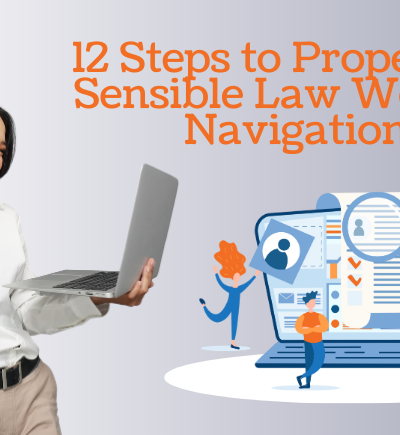Making your personal injury law SEO content more readable is essential for engaging your audience, improving user experience, and increasing the chances of your law content being consumed and shared.
1. Use Clear and Concise Language
Write clearly and straightforwardly, using concise sentences and avoiding unnecessary jargon. Break down complex ideas into simple terms easily understood by your target audience. This helps readers grasp your content more easily and encourages them to stay engaged.
2. Structure Your Content with Headings
Use descriptive and subheadings to structure your content effectively. Headings break up your text visually and provide a logical flow to guide readers through your content. This makes it easier for readers to scan and locate specific information, improving overall readability.
3. Use Short Paragraphs and Sentences
Long blocks of text can be quite intimidating and overwhelming for readers. Instead, aim for short paragraphs consisting of 2-3 sentences. Break up complex ideas into smaller chunks to make it easier for readers to digest the information. Similarly, keep your sentences concise and to the point, avoiding unnecessary fluff.
4. Incorporate Bulleted and Numbered Lists
Lists help organize information and make it more scannable for readers. Use bulleted or numbered lists to emphasize key points, steps, or essential details. This formatting technique lets readers quickly grasp your content’s main ideas and takeaways.
5. Utilize White Space
White space is the space between paragraphs, lines, and elements on your page. It provides visual breathing room and improves the overall readability of your content. Avoid cramming too much information together, and use ample white space to create a clean and visually appealing layout.
6. Optimize Typography
Choose a legible font and font size for your content. Consider the readability of your text across different devices and screen sizes. Ensure sufficient contrast between the law text and background colors to ensure easy reading. Use bold or italic formatting sparingly to emphasize important words or phrases.
7. Include Relevant and Engaging Visuals
Visual elements such as images, charts, or infographics can break up the text and make your content more visually appealing. Use visuals that are relevant to your content and support the main points you’re making. This not only enhances the readability of your content but also increases its shareability and engagement.
8. Incorporate Subheadings and Summaries
Subheadings within sections of your content act as signposts, providing an overview of the following content. They help readers understand the structure of your article and allow them to navigate to sections of interest quickly. Additionally, consider including a summary or conclusion at the end of your content to reinforce critical takeaways.
9. Write in a Conversational Tone
Aim to create a conversational tone in your content to make it more relatable and engaging for readers. Avoid overly formal or technical language that might alienate your audience. Write as if you are conversing with your readers, using inclusive language and addressing their concerns or questions.
10. Edit and Proofread
After writing your content, take the time to edit and proofread it carefully. Look for grammatical errors, spelling mistakes, and awkward sentence structures. Ensure that your content flows smoothly and that ideas are communicated clearly. Editing and proofreading help enhance the overall readability and professionalism of your content.
Conclusion
By implementing these strategies, you can make your personal injury law SEO content more readable, appealing, and accessible to your target audience. Remember to focus on providing valuable information clearly and concisely while optimizing the visual presentation of your content for an engaging user experience.






